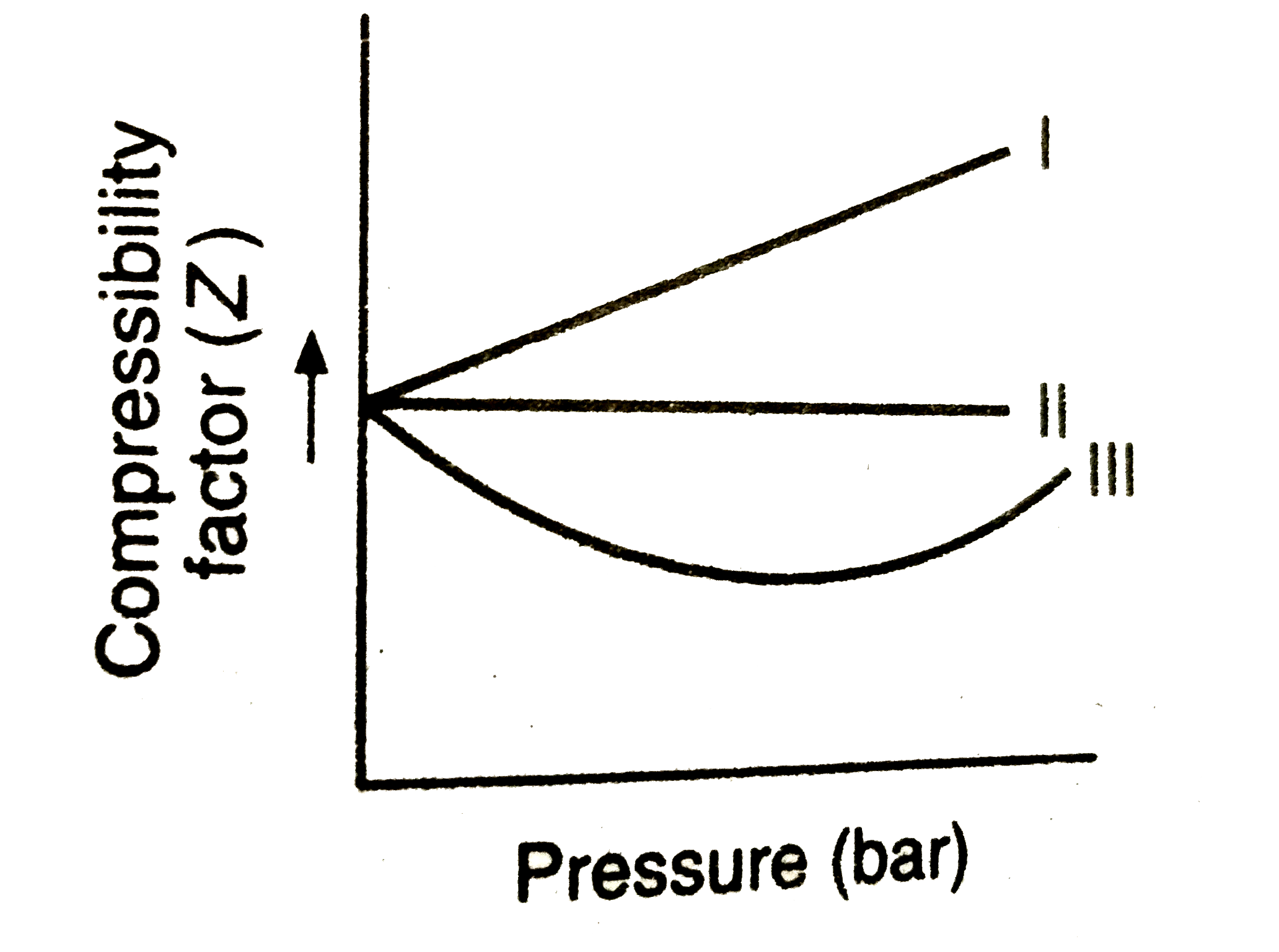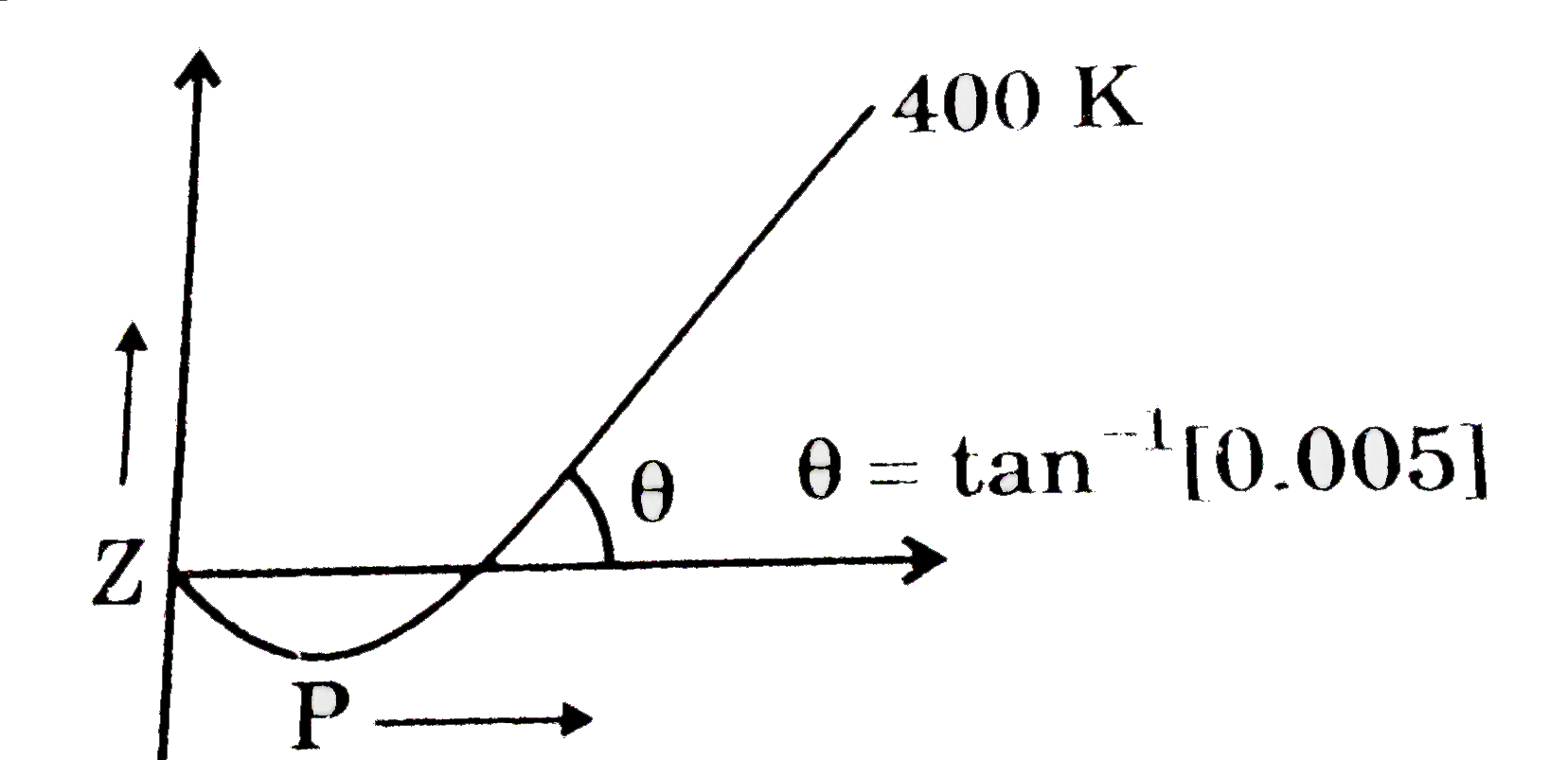Boyle's temperature of four gases are given below:
Gases ABCDTB120K25K500K410K
Which gas can be liquefied most easily ?
A
B
C
D
The correct Answer is:C
To determine which gas can be liquefied most easily based on the given Boyle's temperatures, we can follow these steps:
1. Understand Boyle's Temperature: Boyle's temperature (T_B) is the temperature above which a gas cannot be liquefied, regardless of the pressure applied. Therefore, the lower the Boyle's temperature, the easier it is to liquefy the gas.
2. List the Boyle's Temperatures: We have the following Boyle's temperatures for the gases:
- Gas A: 120 K
- Gas B: 25 K
- Gas C: 500 K
- Gas D: 410 K
3. Identify the Lowest Boyle's Temperature: To find out which gas can be liquefied most easily, we need to identify the gas with the lowest Boyle's temperature.
- Comparing the temperatures:
- Gas A: 120 K
- Gas B: 25 K
- Gas C: 500 K
- Gas D: 410 K
- The lowest temperature is for Gas B, which is 25 K.
4. Conclusion: Since Gas B has the lowest Boyle's temperature, it can be liquefied most easily compared to the other gases.
Final Answer:
Gas B can be liquefied most easily.
---
- Gas A: 120 K
- Gas B: 25 K
- Gas C: 500 K
- Gas D: 410 K
- Comparing the temperatures:
- Gas A: 120 K
- Gas B: 25 K
- Gas C: 500 K
- Gas D: 410 K
- The lowest temperature is for Gas B, which is 25 K.
Gas B can be liquefied most easily.
Topper's Solved these Questions
- STATES OF MATTER (GASES AND LIQUIDS)BOOK - OP TANDONCHAPTER - STATES OF MATTER (GASES AND LIQUIDS)EXERCISE - p 6
2 Videos
- SOLUTIONS (GENERAL AND COLLIGATIVE PROPERTIES)BOOK - OP TANDONCHAPTER - SOLUTIONS (GENERAL AND COLLIGATIVE PROPERTIES)EXERCISE - Self Assessment
31 Videos
- STATES OF MATTER (SOLID STATE)BOOK - OP TANDONCHAPTER - STATES OF MATTER (SOLID STATE)EXERCISE - SELF ASSESSMENT Section VI
3 Videos
Similar Questions
Gases possess characteristic critical temperature which depends upon the magnitude of intermolecular forces between the gas particles. Critical temperatures of ammonia and carbon dioxide are 405.5 K and 304.10 K respectively. Which of these gases will liquify first when you start cooling from 500 K to their critical temperature ?
View SolutionGases possess characteristic critical temperature which depends upon the magnitude of intermolecualr forces between the gas particles, critical temperatures of ammonia and carbon dioxide are 405.5 K and 304.10 K respectively. Which of these gases will liquefy first when you start cooling from 500 K to their critical temperature ?
View Solution
Knowledge Check
Boyle temperature of vaiour gases are given below :
GasTB(K)H2117He23CH4498O2406
Which gas can be liquefied most easily ?AH2BCH4CHeDO2The Boyle temperature of three gases are given in the table :
GasBoyle Temperature (K)Ethene735Oxygen400Hydrigen110
If the compressibility factor was measured at 400 K, the gases are :
 AI-ethene, II-oxygen, III-hydrogenBI-hydrogen, II-ethene, III-oxygenCI-hydrogen, II-oxygen, III-etheneDI-oxygen, II-ethene, III-hydrogen
AI-ethene, II-oxygen, III-hydrogenBI-hydrogen, II-ethene, III-oxygenCI-hydrogen, II-oxygen, III-etheneDI-oxygen, II-ethene, III-hydrogenCritical temperatures for A, B, C and D gases are 25∘C,10∘C,−80∘C and 15∘C respectively. Which gas will be liquefied more easily ?
AABBCCDD
Critical temperature of ammonia and carbon dioxide are 405.5 K and 304.10 K respectively. Which of these gases will liquefy first when you start cooling from 500 K to their critical temperature?
View SolutionGases possess characteristic critical temperature which depends upon the magnitude of intermolecular forces between the gas particles. Critical temperatures of ammonia and carbon dioxide are 405.5 K and 304.10 K respectively. Which of these gases will liquify first when you start cooling from 500 K to their critical temperature ?
View SolutionThe essential conditions for liquefaction of gases were discovered by Andrews in 1869 as a result of his study of pressure-volume-temperature relationship for CO2. If was found that above a certain temperature, it was impossible to liquefy a gas whatever the pressure was applied. The temperature below which the gas can be liquefied by the application of pressure alone is called critical temperature (Tc). The pressure required to liquefy a gas at this temperature is called the critical pressure (Pc). The volume occupied by one mole of the substance at the critical temperature and pressure is called critcal volume. Critical constants are related with van der Waals' constant as follows:
Vc=3b,Pc=a27b2,Tc=8a27Rb
GasesABCDPc(atm)2.2143545Tc(K)5.133127140
Which of the above gases cannot be liquefied at 100 K and 50 atm ?
View SolutionIf critical temperature for the real gas is 500 K then the value of :

View SolutionCritical temperature of gases are given as SO2 (630 K),CH4 (190 K), H2 (33k). Which of the following is the correct order of extent of adsorption?
View Solution
